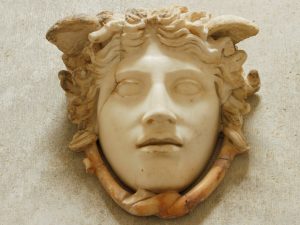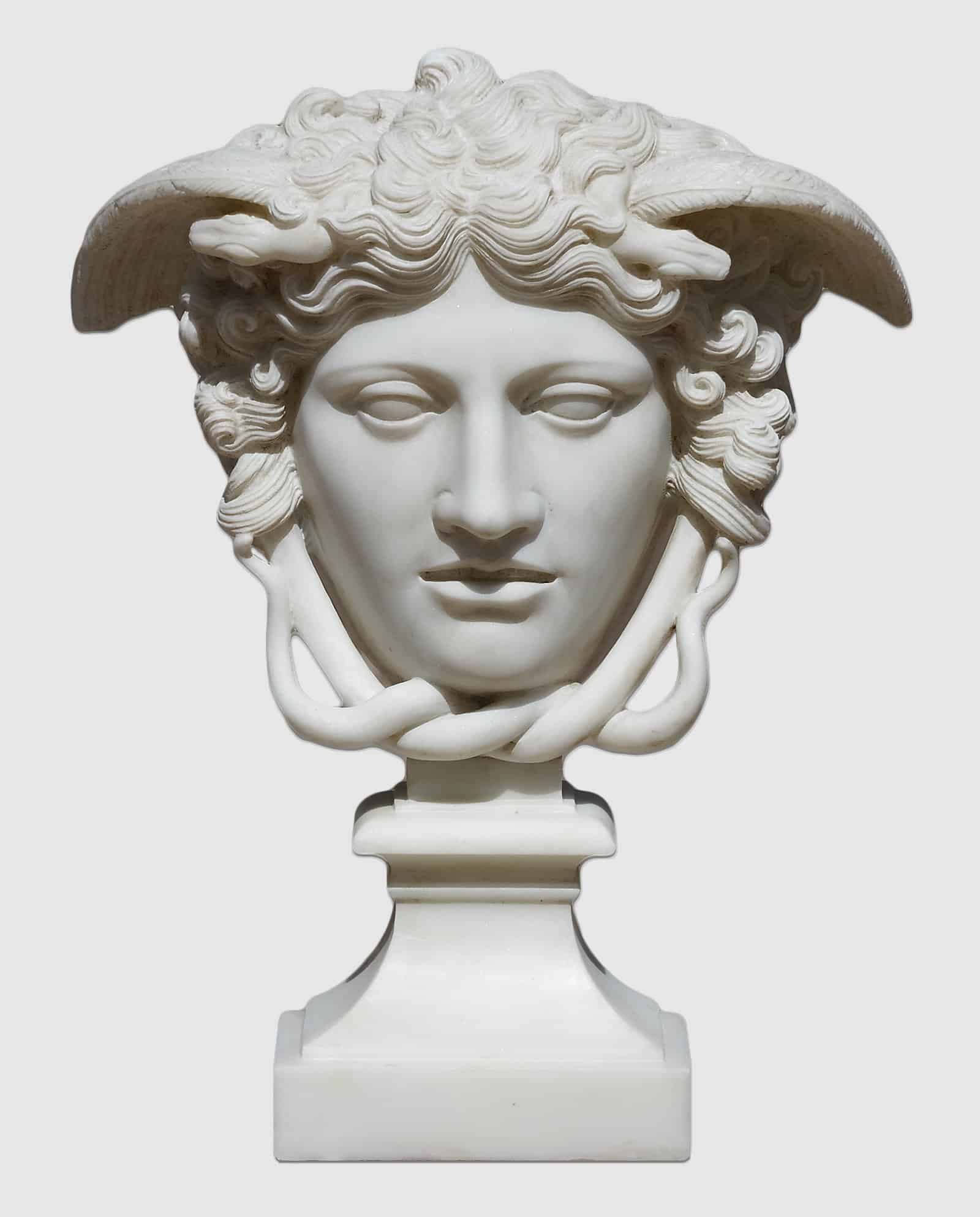Description
The Rondanini Medusa
Our marble head, depicting the "Rondanini" jellyfish is made of statuary marble, with external dimensions, including base, of 45x20x65 cm.
Made entirely in Italy by our master craftsmen, it reproduces the bust of the gorgon Medusa attributed to the Hellenic sculptor Phidias.
When fashion designer Gianni Versace, in the 1990s, elected her as an icon of his creativity, he did so by referring to the values that the Medusa Rondanini inspires: The "seduction, a fatal attraction," but also "the sense of history, classicism" But what is the origin of this Medusa? Why is her effigy still relevant today, to the point of being chosen as the preferred emblem of fascination?

Fig. 1
The Rondanini Medusa, so named after the family that collected it (fig. 1), is a Roman copy of a work of Greek classicism and depicts what many consider to be the earliest example of a gorgoneion of the "beautiful type": a female face with a composed expression, with wings on her temples and two snakes knotted under her chin, a far cry from the bestial grin with which the Gorgon was depicted in archaic times. It was kept for a long time in the Rondanini Palace at the end of Via del Corso in Rome. Now the Rondanini Medusa is in the Glyptoteca in Munich, Germany, and another, beautiful, unpublished copy, which was in the Greco-Roman Museum in the city of Mantua, is now located in the Ducal Palace in Mantua. The original sculpture was made, perhaps by Phidias, in approximately the v-iv century B.C.E., a period when literary sources introduce a variant in the mythical legend, narrating how Perseus decapitates Medusa while she is asleep and thus while her petrifying gaze is rendered harmless by lowered eyelids (E. Phinney, 1971: 452-453). For this reason, in artistic representations the Rondanini medusa loses her initial monstrosity (Medusa is now observable) to become the helpless and "beautiful" victim of the hero, as Ovid recites (Metamorphoses, iv:794-795). The imagery of decapitation during sleep "transforms" Medusa into a creature of the night: she can only be encountered in darkness, appearing among the shadows of the Underworld or as a lunar disc in the darkness of the sky; she is the terrible vision that surfaces in nightmares, petrifying, or she is a sleeper who seduces by her loveliness, suffering death. The sculpture of Medusa Rondanini, which stands chronologically at the juncture between the terrible gorgon and the attractive gorgon, takes on all this "nocturnal" imagery: the grace of her face disquiets so much that she is associated with death, her beauty is so mysterious and arcane that it cannot be reproduced. J. W. Goethe, who in 1786 is credited with bringing this marble mask to the attention of scholars, reads, for example, in its "nobly beautiful face [...] the anguished rigidity of death [...] expressed with unspeakable power" in the same way, after recalling the "spectral existence" of the gorgon in the Greek afterlife, the nineteenth-century art historian Adolf Furtwängler (1895:161) extols "the spiritual character" of the Medusa Rondanini.
CusenzaMarmi, today, reproduces some copies for the most exclusive clients who wish to admire this sculpture in the privacy of their own homes.
By examining the photos in detail, you can appreciate our extreme attention to detail.
Free shipping throughout Europe.





